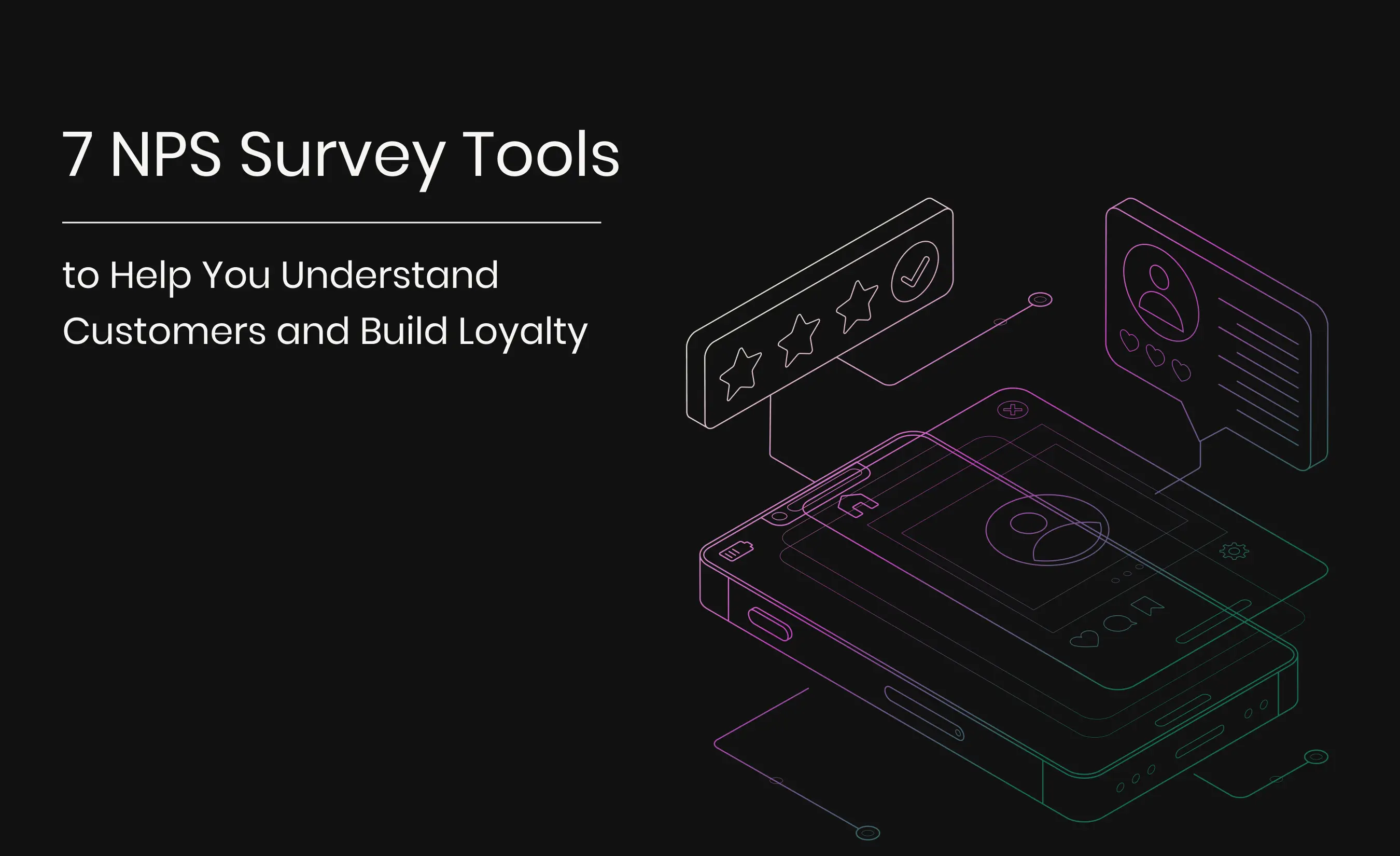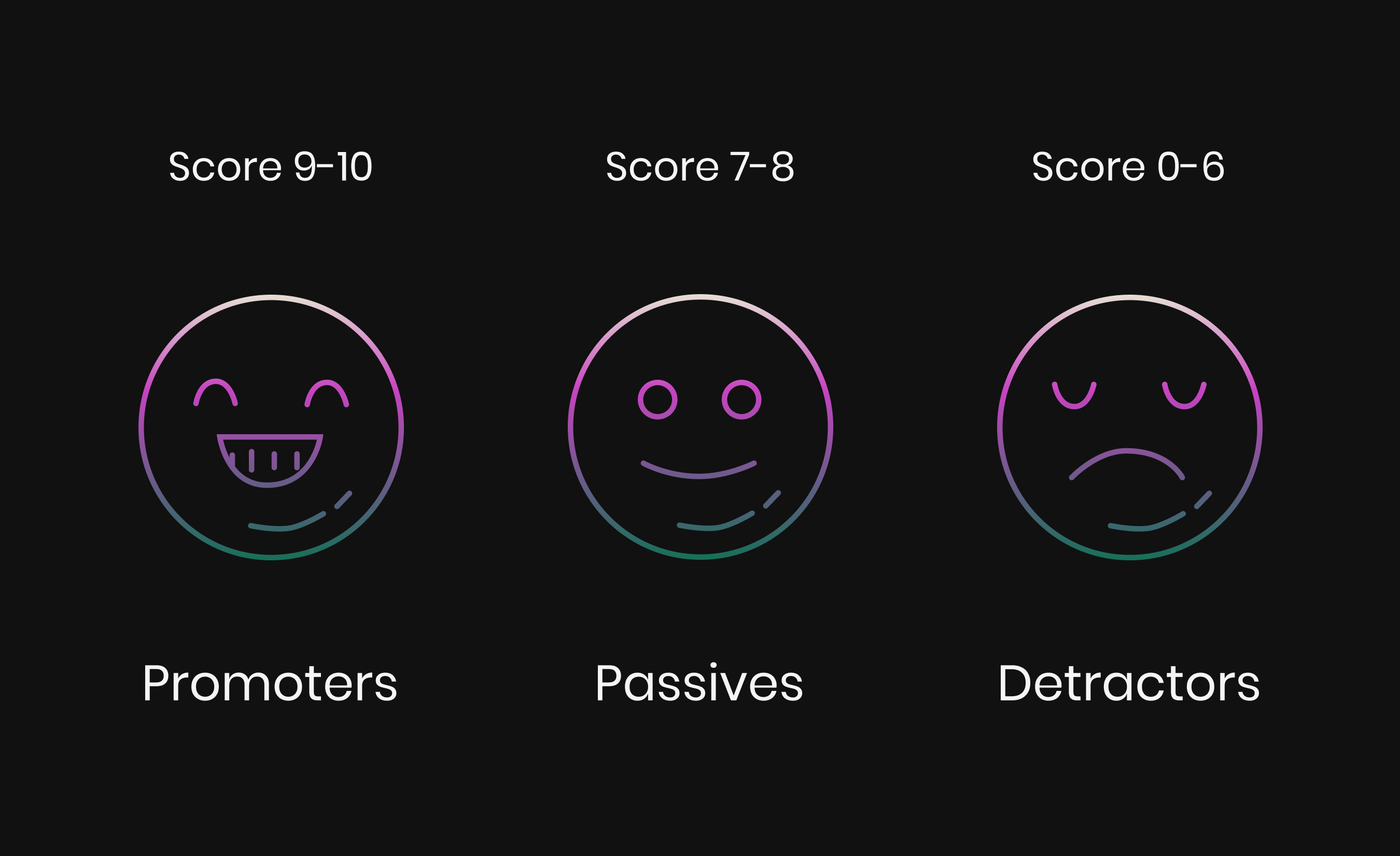RESOURCE ARTICLE
7 NPS Survey Tools to Help You Understand Customers and Build Loyalty

Every business talks about putting customers first, but very few measure how customers actually feel after an interaction. This is where the Net Promoter Score (NPS) comes in. It is a simple way to ask customers one powerful question: How likely are you to recommend us to others? The answer to this question reveals how loyal customers are, how satisfied they feel, and whether they will advocate for your brand.
What Should You Look for in NPS Survey Software?
To measure this effectively, you need more than a spreadsheet. You need NPS survey software that helps you collect responses, analyze trends, and act on feedback in real time. With the right tool, you can uncover why customers are happy or unhappy, identify areas of improvement, and strengthen long-term loyalty.
This guide introduces seven reliable NPS survey tools that can help you turn feedback into meaningful action.
What is NPS?
The Net Promoter Score (NPS) is a widely used customer loyalty metric that measures how likely customers are to recommend a company to others. It is based on a single survey question, usually rated on a scale from 0 to 10.

- Promoters (9–10): Loyal customers who actively recommend the brand.
- Passives (7–8): Customers who are satisfied but not enthusiastic.
- Detractors (0–6): Unhappy customers who may discourage others from choosing the brand.
The score is calculated by subtracting the percentage of detractors from the percentage of promoters. The result ranges from -100 to +100, with higher scores indicating stronger loyalty.
NPS is popular because it is simple, comparable across industries, and gives businesses a quick way to understand overall sentiment. When paired with satisfaction survey tools and feedback analytics, it becomes a powerful driver of improvement and growth.
07 Best NPS Survey Tools
Choosing the right NPS survey software can make all the difference in how you collect feedback and act on it. Each of the tools below offers unique strengths, from simple survey setups to advanced analytics and integrations. Here are seven options worth considering measuring loyalty and build stronger customer relationships.
1. Uzera
Uzera is more than a survey tool. It is an onboarding and customer engagement platform built for SaaS companies and websites. Alongside interactive product tours, checklists, and demos, it provides integrated NPS survey software to capture customer sentiment at different stages of the user journey.
With Uzera, you can:
- Collect NPS, CSAT, and CES responses directly inside your product.
- Track user actions to understand how engagement connects with feedback.
- Use feedback analytics to identify at-risk customers and reduce churn.
- Combine surveys with guided onboarding for a more complete customer experience.
Its unique interactive demo feature (DEMOX) sets it apart, allowing businesses to educate, support, or promote features while collecting satisfaction data in one flow. For SaaS teams looking to blend adoption, engagement, and loyalty measurement into a single platform, Uzera is a compelling choice.
2. SurveyMonkey
SurveyMonkey has been a trusted name in surveys for years. For NPS, it offers ready-to-use templates and flexible design options. Businesses can customize surveys to match branding and collect responses through multiple channels. The tool also connects with popular apps like Salesforce and HubSpot, which makes it easier to align customer feedback with sales or support data.
3. Qualtrics
If your company needs advanced research and feedback analytics, Qualtrics is a strong choice. It provides in-depth reporting, text analysis, and predictive insights that go beyond the basic score. Larger organizations often choose Qualtrics because it can handle complex data and give decision-makers a full picture of customer satisfaction and loyalty.
4. Hotjar
Hotjar is widely known for heatmaps and behavioral insights, but its survey feature is also valuable for NPS. You can ask customers the NPS question while they are browsing your site or using your product. This adds context because you see not only what customers say but also how they interact. For digital-first businesses, this combination of feedback and behavior is powerful.
5. Typeform
Typeform creates surveys that feel like conversations rather than forms. Its design encourages customers to respond because it feels personal and engaging. For NPS, this higher engagement often leads to more complete data. Typeform also integrates with platforms like Slack and Google Sheets, so teams can easily share and act on the insights.
6. HubSpot Service Hub
HubSpot Service Hub connects customer feedback directly with the CRM. This means NPS results are tied to each customer record, making it easier for support and marketing teams to take specific actions. You can segment promoters, passives, and detractors, and trigger workflows based on their responses. For businesses already using HubSpot, this integration makes it a natural choice.
7. Zonka Feedback
Zonka Feedback is built to capture surveys across multiple touchpoints, including kiosks, tablets, and mobile devices. It offers pre-built NPS templates and provides detailed analytics on promoter, passive, and detractor segments. Teams can set up automated alerts for negative feedback, ensuring timely responses. This makes it useful for both on-site and digital experiences.
Why NPS Survey Software Matters?
NPS is more than a number. It is a signal of customer loyalty, repeat business, and brand reputation. A good net promoter score tool simplifies the process of gathering feedback from customers across different touchpoints. Instead of waiting weeks to understand what customers feel, businesses can see patterns instantly and respond with speed.
Here are a few reasons why the right NPS survey software is so important:
- It streamlines the process of collecting customer feedback.
- Built-in feedback analytics show trends across time, so you can see whether satisfaction is improving or declining.
- It allows teams to benchmark performance against competitors or industry averages.
- It makes acting on feedback easier through integrations with CRM and support systems.
When companies use these tools consistently, they create a feedback loop. Customers feel heard, teams know what to improve, and the overall experience grows stronger.
What Should You Look for in NPS Survey Software?
Not all survey tools are the same. Before selecting one, consider the features that will actually support your customer experience goals:
With these essentials, you can move beyond collecting scores and start creating value from every customer response.
How NPS Tools Drive Loyalty and Retention
The strength of NPS survey software lies in its ability to turn raw feedback into action. By identifying promoters, you know who your most loyal advocates are. By studying detractor responses, you uncover pain points that might cause churn. When businesses address concerns quickly and close the loop, customers feel valued. Over time, this builds trust and loyalty, which directly improves retention.
Platforms like Uzera show how powerful this can be in practice. Its built-in surveys capture NPS, CSAT, and CES, creating a continuous feedback loop that runs alongside user onboarding and engagement flows. Instead of waiting for quarterly reviews, companies can act on sentiment in real time. If a detractor flags a poor experience, alerts can be triggered for immediate follow-up. If a promoter leaves positive feedback, teams can nurture them into brand advocates.
This proactive engagement reduces churn and strengthens long-term relationships. By pairing loyalty metrics with behavioral insights, businesses can see not only how customers feel but also what actions drive that sentiment. The result is a clearer path to retention: understand the feedback, act on it quickly, and personalize experiences so customers see consistent value.
Wrapping It Up!
NPS is more than just a score. It is a way to listen, learn, and adapt to customer needs. The right NPS survey software makes it possible to gather feedback at scale, uncover trends, and strengthen loyalty through action.
The seven tools highlighted here provide a starting point. Each has strengths that suit different types of businesses, from startups to large enterprises. What matters most is choosing a tool that your team will use consistently and that integrates with your existing systems.
Customer loyalty is built through consistent effort. With the right tools, you can make feedback the center of your growth strategy.
Frequently Asked Questions
What is NPS survey software?
NPS survey software helps businesses measure customer loyalty by asking how likely customers are to recommend a product or service.
Why is NPS important for businesses?
NPS highlights promoters, passives, and detractors, giving companies insights into loyalty, satisfaction, and areas that need improvement.
How often should you run NPS surveys?
Most businesses run NPS surveys quarterly or after key interactions like purchases or support requests, depending on customer touchpoints.
What features should I look for in NPS survey tools?
Key features include customizable surveys, multi-channel distribution, feedback analytics dashboards, integrations, and automation.







.svg)


.svg)

